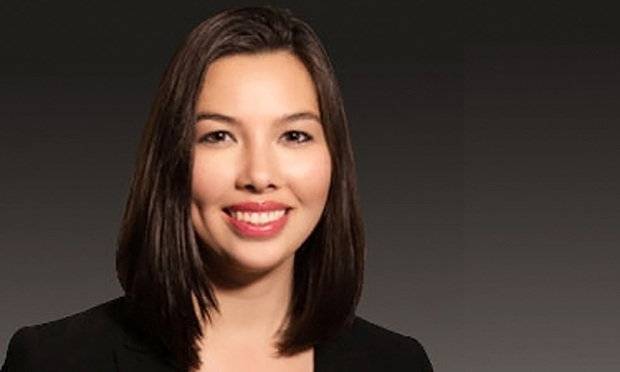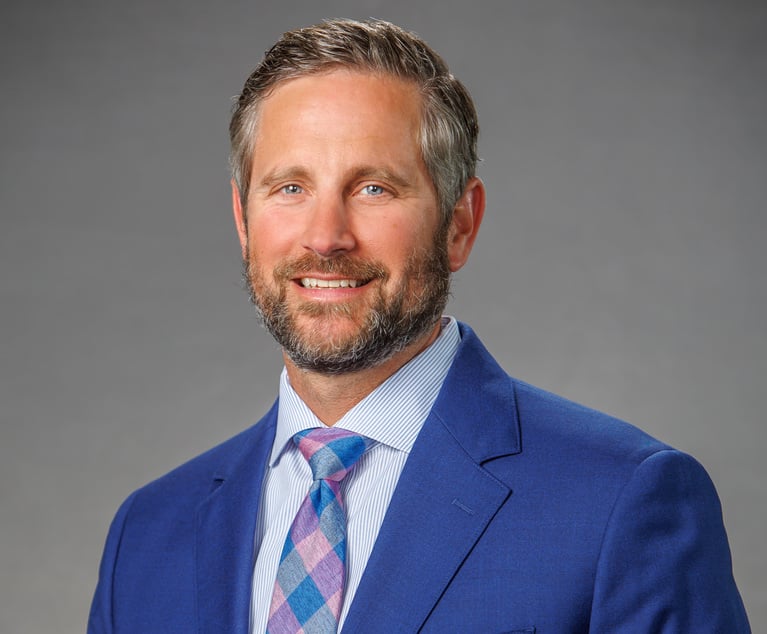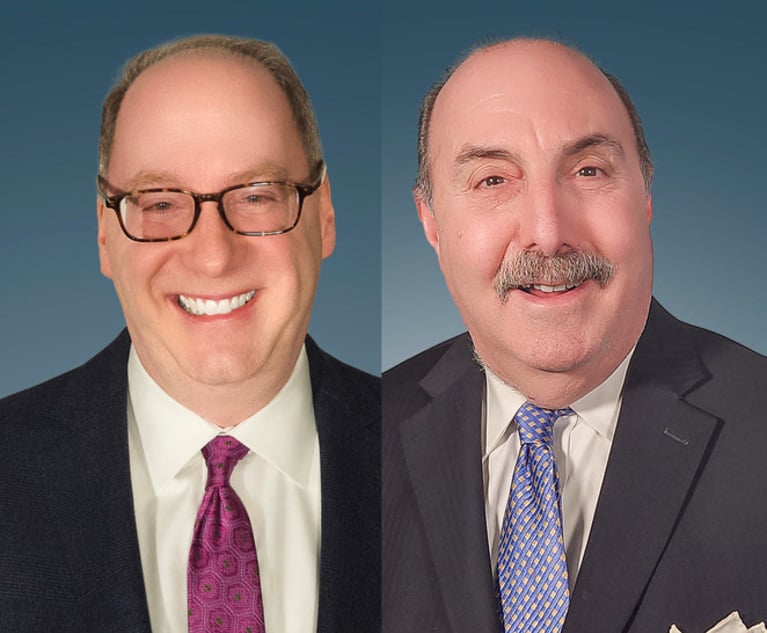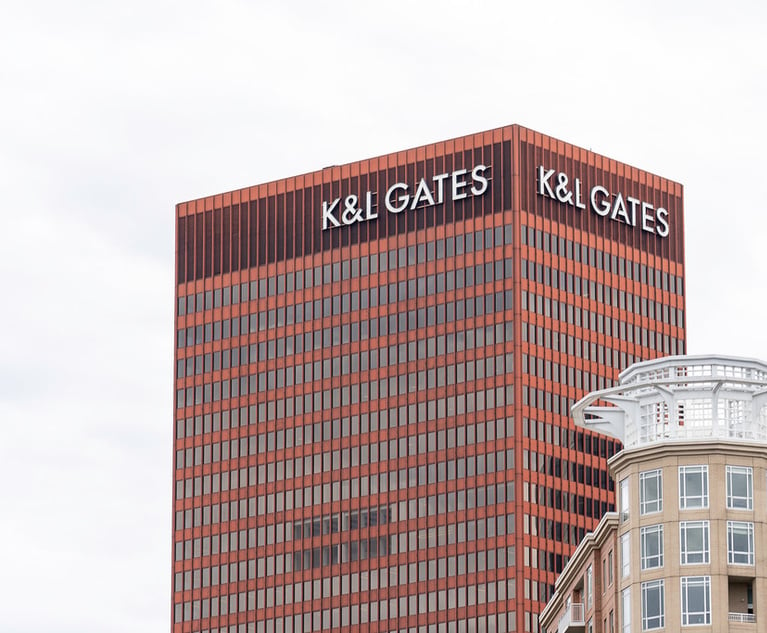2018 in Review: Law Firms See Minor Gains While Affinity Bars Set Goals
The National Association for Law Placement (NALP) has released its 2018 Report on Diversity in U.S. Law Firms, and 2018 saw the largest increase in diverse partners in NALP's history—which happens to be .007.
April 05, 2019 at 12:46 PM
5 minute read
 Melissa Pang, president of APABA-PA board of directors.
Melissa Pang, president of APABA-PA board of directors.
The National Association for Law Placement (NALP) has released its 2018 report on diversity in U.S. law firms, and 2018 saw the largest increase in diverse partners in NALP's history—which happens to be .007. While the increase is only seven-tenths of a percentage point nationwide, it still represents progress.
A real takeaway from the NALP survey is how the numbers vary widely geographically, with cities like Miami leading the nation in percentages of diverse partners, diverse women partners, diverse associates, diverse women associates and diverse summer associates, while Philadelphia's numbers still sit well below the national mean.
Guy Kamealoha Noa, an officer of the Asian Pacific American Bar Association of South Florida, attributes Miami's success to its diverse population, particularly with the Hispanic population: “Because of the diverse population, it makes firms, clients and partners more willing to hire minorities and recognize the positives and the strengths diverse attorneys can bring to a law firm.” Noa also credits the local affinity bars that work hard to support and prepare diverse lawyers for partnership and pursue judgeships.
The richness of Philadelphia's diverse population has yet to be reflected in the legal profession.
In the corporate legal world, national affinity bar associations have set numerical goals to increase diversity at the general counsel level. In 2005, Wilson Chu, a partner at McDermott Will and Emery, and Don Liu, general counsel of Target, in connection with the National Asian Pacific American Bar Association (NAPABA), launched a 10-by-10 initiative, with a goal of 10 Asian American general counsel in Fortune 500 companies by 2010. Through calls with recruiters, mentoring sessions, and training, the 10-by-10 initiative reached its goal two years ahead of its deadline and launched a new 20-by-20 initiative in 2015. By 2018, there were 23 Asian American general counsels in the Fortune 500. NAPABA has not set a new goal yet, but has discussed 50 by 25.
In March 2018, the Hispanic National Bar Association launched PODER25, an initiative that uses programming, leadership training, coaching, networking events and mentoring to increase the number of Hispanic general counsels in Fortune 500 companies from nine to 20 by 2025. Hispanics, which make up 18 percent of the U.S. population, are among the most underrepresented populations in the Fortune 500 general counsels.
In June 2018, an advisory council of African-American former and current in-house leaders launched the Black GC 2025 Initiative, which aims to increase African-American general counsels in Fortune 1000 companies from 38 to 50 by 2020 and 100 by 2025 by leveraging relationships with current African-American general counsel and executive search firms to create a comprehensive network of current and aspiring general counsel.
Diversity in-house has the potential to translate to an increase in diversity in law firms. Further, corporations have developed initiatives, which require or reward diversity in their outside counsel. Ten years ago, Microsoft instituted its Law Firm Diversity Program, providing incentives for its outside counsel firms that reach specified diversity goals. Firms can earn up to 2 percent of legal fees and bonuses if they meet these diversity goals. Since then, the number of hours billed by diverse lawyers on Microsoft matters has increased by over 20 percent.
Diversity in-house can also provide diverse lawyers with insight, connections and forays into the once-impervious business world that can lead to business development—which is an indispensable asset in today's legal market. Facing these realities, NAPABA has developed numerous opportunities for law firm partners and associates to network with corporate counsel. At its annual convention, NAPABA hosts “NAPABA Connects” where law firms of all sizes that underwrite a sponsorship may participate in formal one-on-one meetings with in-house counsel to discuss potential business relationships. To build the law firm and in-house leadership pipeline, NAPABA sponsors a year-long leadership advancement program to develop mid-career leadership skills of its members, while fostering peer-to-peer relationships within the profession, especially between in-house counsel and law firm attorneys. For those who seek to become law firm partners in particular, NAPABA's prospective partners program (PPP) aims to increase the number of Asian Pacific American partners at major law firms through mentorship and relationship building. PPP reports that 55 percent of its alumni have moved on to partnership and another 17 percent have advanced to senior in-house positions.
Despite decades of diversity and inclusion efforts, the legal profession remains one of the least diverse professions and is making only incremental progress. With these concerted efforts to increase diversity, hopefully 2019 will see even greater gains than 2018.
Melissa Pang is president of the Asian Pacific American Bar Association of Pennsylvania (APABA-PA), which is dedicated to the advancement of the interests of Asian Pacific American attorneys and the Asian American community across the commonwealth of Pennsylvania.
This content has been archived. It is available through our partners, LexisNexis® and Bloomberg Law.
To view this content, please continue to their sites.
Not a Lexis Subscriber?
Subscribe Now
Not a Bloomberg Law Subscriber?
Subscribe Now
NOT FOR REPRINT
© 2025 ALM Global, LLC, All Rights Reserved. Request academic re-use from www.copyright.com. All other uses, submit a request to [email protected]. For more information visit Asset & Logo Licensing.
You Might Like
View All

Products Liability: The Absence of Other Similar Claims—a Defense or a Misleading Effort to Sway a Jury?


K&L Gates Sheds Space, but Will Stay in Flagship Pittsburgh Office After Lease Renewal
Trending Stories
- 1'It's Not Going to Be Pretty': PayPal, Capital One Face Novel Class Actions Over 'Poaching' Commissions Owed Influencers
- 211th Circuit Rejects Trump's Emergency Request as DOJ Prepares to Release Special Counsel's Final Report
- 3Supreme Court Takes Up Challenge to ACA Task Force
- 4'Tragedy of Unspeakable Proportions:' Could Edison, DWP, Face Lawsuits Over LA Wildfires?
- 5Meta Pulls Plug on DEI Programs
Who Got The Work
Michael G. Bongiorno, Andrew Scott Dulberg and Elizabeth E. Driscoll from Wilmer Cutler Pickering Hale and Dorr have stepped in to represent Symbotic Inc., an A.I.-enabled technology platform that focuses on increasing supply chain efficiency, and other defendants in a pending shareholder derivative lawsuit. The case, filed Oct. 2 in Massachusetts District Court by the Brown Law Firm on behalf of Stephen Austen, accuses certain officers and directors of misleading investors in regard to Symbotic's potential for margin growth by failing to disclose that the company was not equipped to timely deploy its systems or manage expenses through project delays. The case, assigned to U.S. District Judge Nathaniel M. Gorton, is 1:24-cv-12522, Austen v. Cohen et al.
Who Got The Work
Edmund Polubinski and Marie Killmond of Davis Polk & Wardwell have entered appearances for data platform software development company MongoDB and other defendants in a pending shareholder derivative lawsuit. The action, filed Oct. 7 in New York Southern District Court by the Brown Law Firm, accuses the company's directors and/or officers of falsely expressing confidence in the company’s restructuring of its sales incentive plan and downplaying the severity of decreases in its upfront commitments. The case is 1:24-cv-07594, Roy v. Ittycheria et al.
Who Got The Work
Amy O. Bruchs and Kurt F. Ellison of Michael Best & Friedrich have entered appearances for Epic Systems Corp. in a pending employment discrimination lawsuit. The suit was filed Sept. 7 in Wisconsin Western District Court by Levine Eisberner LLC and Siri & Glimstad on behalf of a project manager who claims that he was wrongfully terminated after applying for a religious exemption to the defendant's COVID-19 vaccine mandate. The case, assigned to U.S. Magistrate Judge Anita Marie Boor, is 3:24-cv-00630, Secker, Nathan v. Epic Systems Corporation.
Who Got The Work
David X. Sullivan, Thomas J. Finn and Gregory A. Hall from McCarter & English have entered appearances for Sunrun Installation Services in a pending civil rights lawsuit. The complaint was filed Sept. 4 in Connecticut District Court by attorney Robert M. Berke on behalf of former employee George Edward Steins, who was arrested and charged with employing an unregistered home improvement salesperson. The complaint alleges that had Sunrun informed the Connecticut Department of Consumer Protection that the plaintiff's employment had ended in 2017 and that he no longer held Sunrun's home improvement contractor license, he would not have been hit with charges, which were dismissed in May 2024. The case, assigned to U.S. District Judge Jeffrey A. Meyer, is 3:24-cv-01423, Steins v. Sunrun, Inc. et al.
Who Got The Work
Greenberg Traurig shareholder Joshua L. Raskin has entered an appearance for boohoo.com UK Ltd. in a pending patent infringement lawsuit. The suit, filed Sept. 3 in Texas Eastern District Court by Rozier Hardt McDonough on behalf of Alto Dynamics, asserts five patents related to an online shopping platform. The case, assigned to U.S. District Judge Rodney Gilstrap, is 2:24-cv-00719, Alto Dynamics, LLC v. boohoo.com UK Limited.
Featured Firms
Law Offices of Gary Martin Hays & Associates, P.C.
(470) 294-1674
Law Offices of Mark E. Salomone
(857) 444-6468
Smith & Hassler
(713) 739-1250





